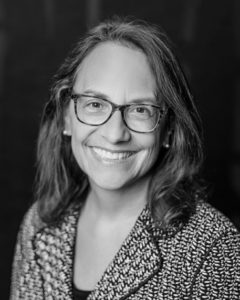“Vaccines are in a sense victims of their own success. Diseases which caused so much fear years ago cause little fear today because today’s parents have never seen such cases. They are artifacts of history to them.” – Walter A. Orenstein, professor of medicine, pediatrics and global health at Emory University and associate director of the Emory Vaccine Center
Nearly 70 years ago, in April 1955, President Eisenhower invited Dr. Jonas Salk to the White House. The typically stoic retired U.S. Army general choked up as he thanked Salk for his creation of a vaccine to prevent the spread of polio:
“… When I think of the countless thousands of American parents and grandparents who are hereafter to be spared the agonizing fears of the annual epidemic of polio myelitis, when I think of all the agony that these people will be spared as they see loved ones suffering in bed, I must say to you I have no words in which adequately to express the thanks of myself, all the people I know, and all 164 million Americans, to say nothing of all the other people in the world.”
Today, as the Delta variant of COVID-19 continues its rapid and deadly spread, our nation and state again face agonizing fears every day. Nearly 65,000 Californians have lost their lives to this disease.
In the past two months, we’ve seen the number of daily cases in California rise 445%, to more than 7,500 every day. Hundreds ended up in hospital beds needing intensive treatment to keep them alive. An average of 23 Californians lost their lives every day for the past week, 15% more than the lowest point of COVID-19 deaths this year and as COVID-19 cases begin to climb again, thousands more are expected to require hospitalization in the coming months. New models suggest that COVID-19 cases will continue to grow, exponentially, into October before they begin to taper.
It can be hard to humanize these tragedies with numbers alone, but here’s one thing we know about the Californians who fell victim to COVID-19: More than 47,000 were 65 and older — recent retirees looking forward to a well-deserved time to relax, grandparents whose grandchildren will miss them at their high school graduations, mothers and fathers who left grieving children — tens of thousands who had so much still to give to their families and friends.
Gone.
And current cases appear to be trending younger as this variant broadens its reach.
The ability to prevent further loss and suffering for Californians is why CHA earlier this week publicly supported Gov. Newsom’s effort to spur state employees and health care workers to get vaccinated.
Some continue to debate the use of vaccines. As hospital leaders, our role is to follow the science, care for those in need, and save lives. Job one for hospitals must be the well-being of patients at their most vulnerable moment to assure them that they are safe and that those caring for them are safe.
Vaccinations do that, and the more people who are vaccinated, the safer everyone will be in the long run, as there will be fewer “variant incubators” that could pose long-term threats.
Every day, all of us see the worst of this pandemic. Hospital workers are exhausted, resources are strained, our social and economic pillars are shaky. The best way out of this difficult period is a vaccinated California.
It took far too long for polio. Three years after Eisenhower congratulated Salk on his breakthrough, the United States was still working to eradicate polio. In May 1958, the president issued this statement, whose words have bearing on the challenge we face today:
“Now that there is plenty of Salk vaccine, everyone can receive some protection before the polio season starts. Not to do so is to take unnecessary risks of lifetime disability and even death. I especially appeal to parents to take advantage of this great research discovery to protect themselves and their children against this dread disease.”
President Eisenhower never got to see the fruits of his efforts. He died in 1969, 10 years before polio was finally eradicated from the United States.
We mustn’t let that happen with COVID-19.
